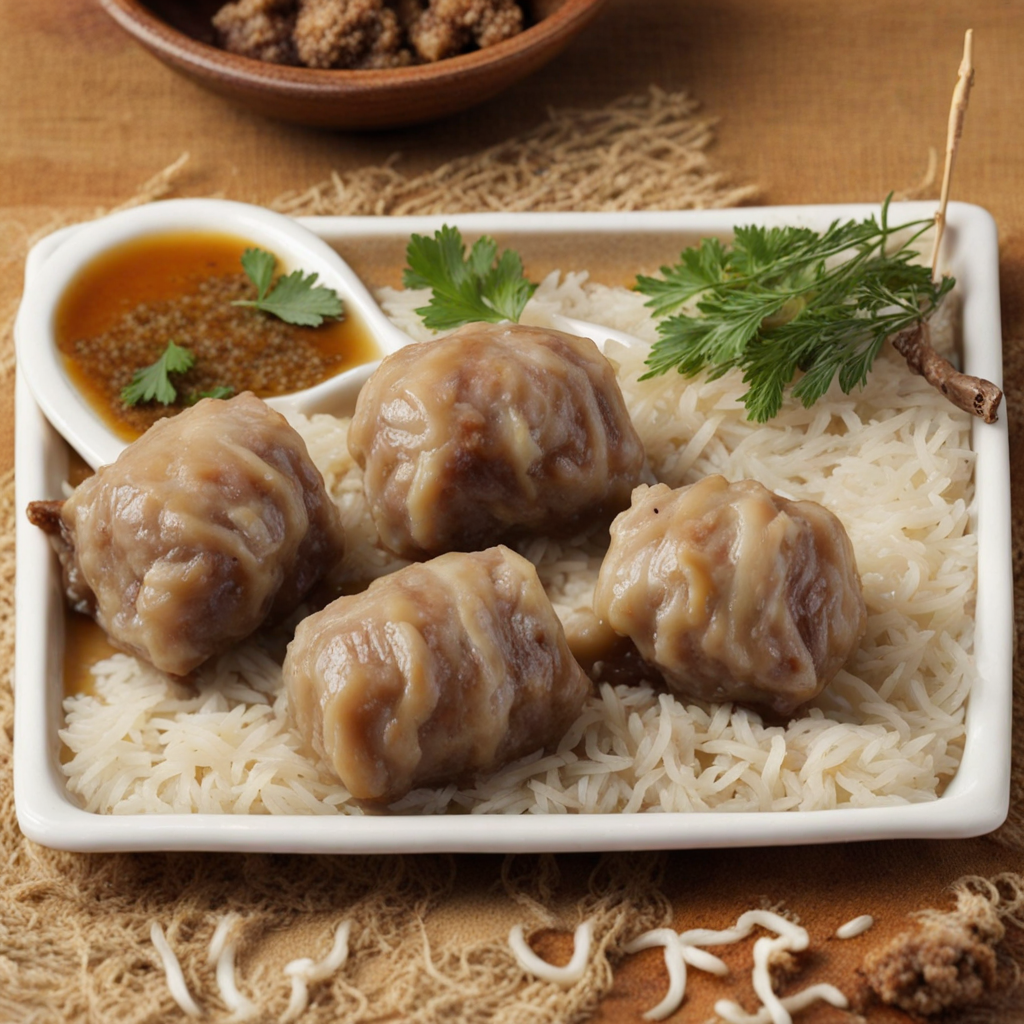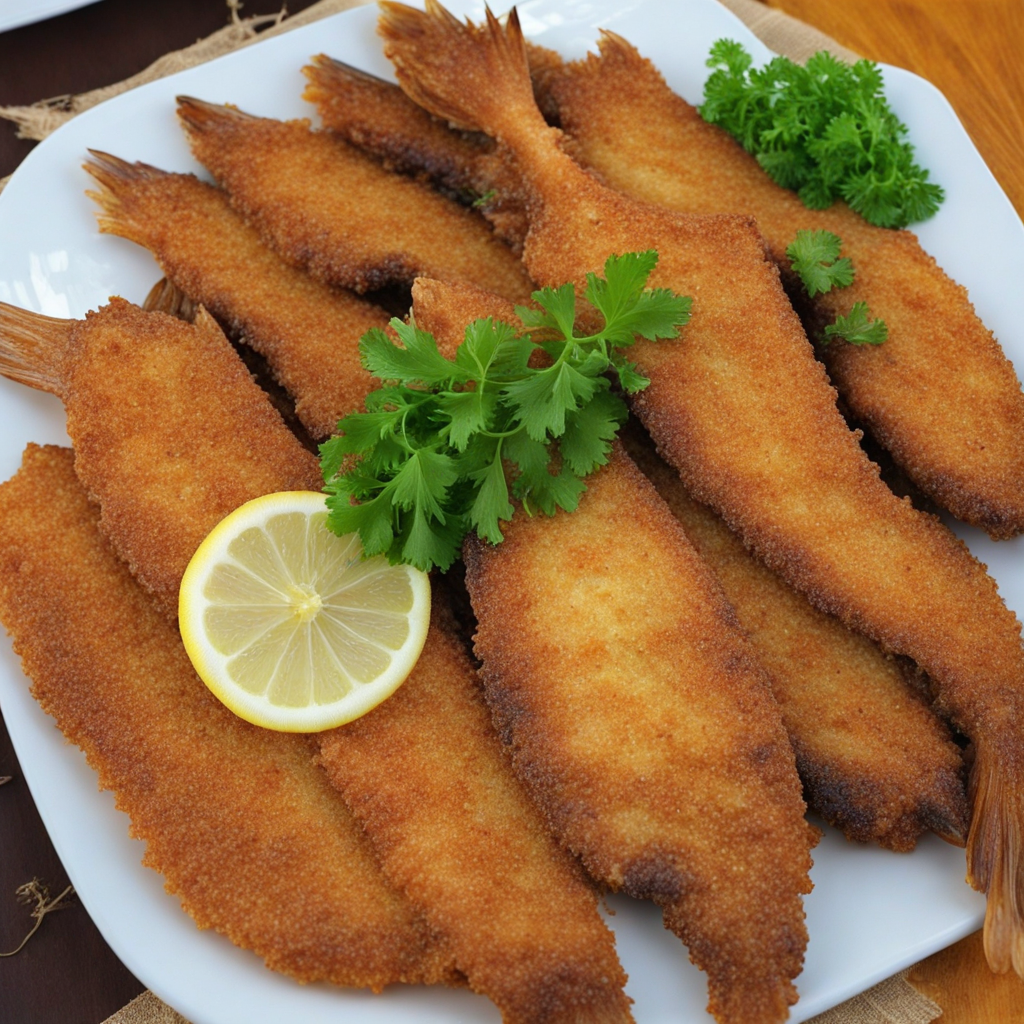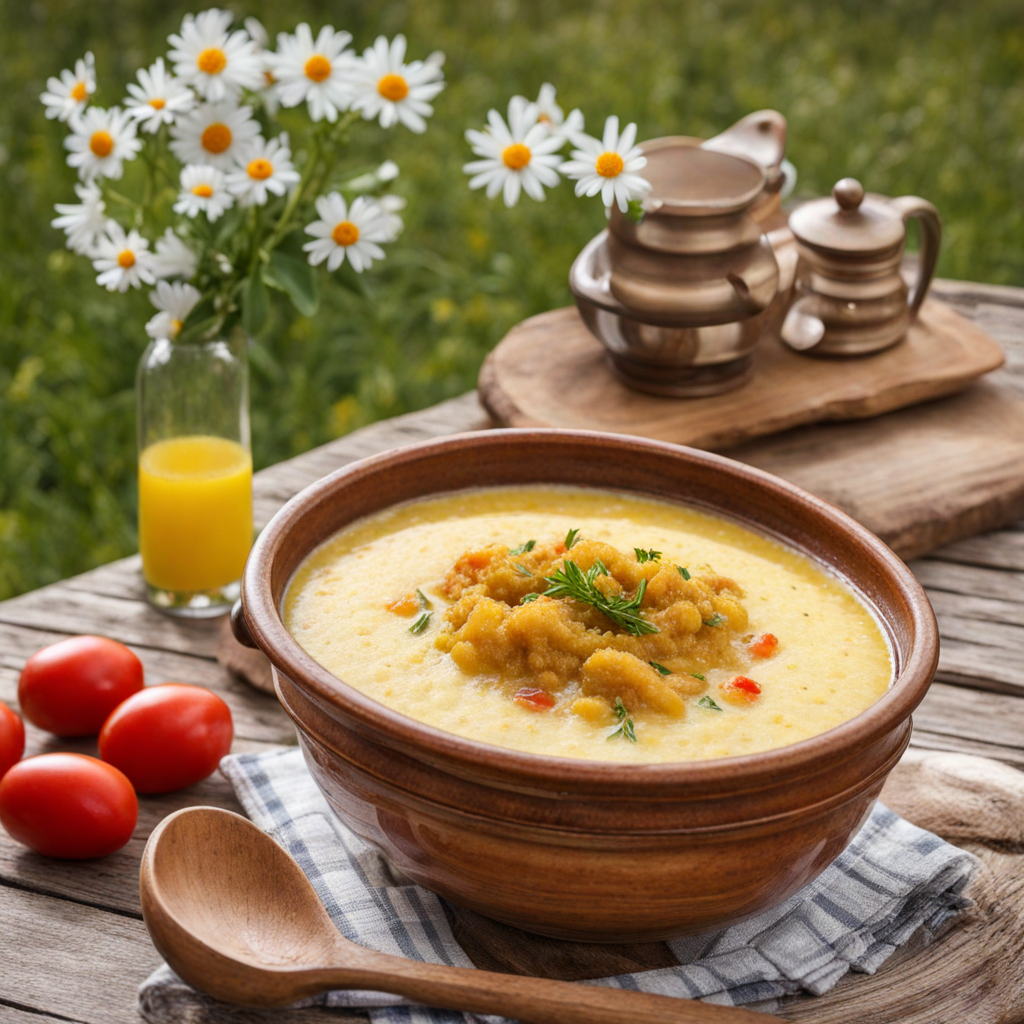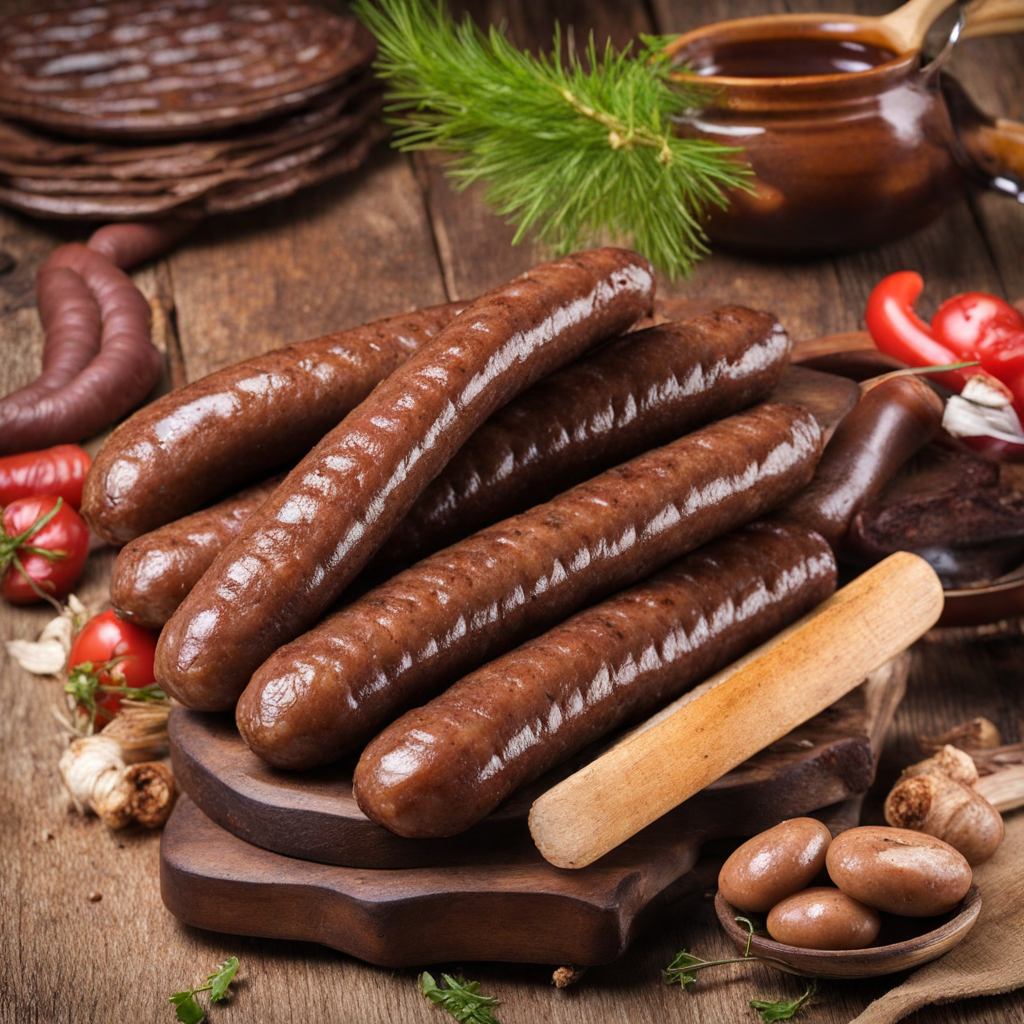Drob de miel
Drob de miel is a traditional Romanian dish that embodies the essence of the country's culinary heritage, particularly popular during the Easter celebrations. This savory delicacy is essentially a lamb haggis, made from a blend of finely chopped lamb meat, offal, and an array of aromatic herbs and spices. The mixture is typically enriched with garlic, green onions, and a generous dose of fresh dill and parsley, lending it a vibrant flavor profile that is both earthy and refreshing. The ingredients are encased in a layer of lamb intestine or wrapped in a pastry, then baked to perfection, resulting in a dish that is both hearty and comforting. The texture of Drob de miel is a delightful contrast, with the tender meat mingling with the finely chopped herbs and spices. Each bite offers a burst of flavor, with the richness of the lamb complemented by the freshness of the herbs, creating a harmonious balance that is truly unique. The aroma that wafts from the oven during the baking process is intoxicating, inviting anyone nearby to indulge in this festive treat. It is often served cold or at room temperature, making it a perfect addition to a festive spread alongside pickles and fresh bread. This dish not only showcases the creativity of Romanian cuisine but also reflects the cultural significance of lamb during Easter celebrations, symbolizing rebirth and renewal. Drob de miel is traditionally sliced into wedges and enjoyed as an appetizer or a main dish, often accompanied by a tangy mustard or a dollop of sour cream for added richness. Its unique combination of flavors and textures makes it a must-try for anyone looking to explore the diverse tastes of Romania, offering a true taste of the country's traditions and culinary artistry.
How It Became This Dish
Drob de Miel: A Culinary Tradition of Romania Drob de miel, a traditional Romanian dish, is a savory lamb haggis that plays a significant role in the country’s culinary landscape, especially during the Easter celebration. This dish, rich in history and flavor, encapsulates the essence of Romanian culture, blending regional ingredients with customs that have evolved over centuries. Origins of Drob de Miel The origins of drob de miel can be traced back to ancient pastoral practices in the Carpathian region. The name "drob" itself derives from the word for "offal" in Romanian, reflecting the dish's primary ingredients—lamb offal, particularly the liver, lungs, and heart, mixed with herbs, vegetables, and spices. Historically, when sheep were slaughtered during spring festivals, every part of the animal was utilized to honor the creature and avoid waste, a practice rooted in the traditions of pastoral communities. Lambs are particularly significant in Romania’s Easter celebrations, symbolizing sacrifice and renewal. In Christian tradition, the lamb is associated with the resurrection of Christ, making it a staple on festive tables during the Easter season. Drob de miel is often prepared as part of the Easter feast, representing both a culinary delight and a spiritual offering. Cultural Significance In Romanian culture, food is more than sustenance; it embodies familial bonds, tradition, and community. Drob de miel serves as a focal point during Easter gatherings, where families come together to share meals and celebrate their heritage. The preparation of drob is often a communal activity, with family members contributing their skills and knowledge passed down through generations. The dish's preparation involves intricate steps: the offal is first cleaned and boiled, then chopped finely and mixed with a variety of ingredients such as green onions, dill, parsley, eggs, and breadcrumbs. This mixture is then encased in a lamb’s stomach or wrapped in parchment, resembling a loaf that is baked until firm. The use of fresh herbs not only adds flavor but also reflects the seasonal availability of ingredients, a hallmark of Romanian cuisine, which emphasizes local produce and traditional cooking methods. The Development of Drob de Miel Over Time As with many traditional dishes, the recipe for drob de miel has evolved over time, influenced by regional variations and modern culinary trends. In the past, the dish was primarily associated with rural households, where the skills of butchering and offal preparation were commonplace. However, with urbanization and changes in lifestyle, the making of drob became less frequent among the younger generations, who often opted for convenience over tradition. In recent decades, there has been a revival of interest in traditional Romanian cuisine, fueled by a growing appreciation for local food heritage and artisanal methods. Chefs and home cooks alike have begun to explore and experiment with the traditional recipes, infusing them with contemporary flair. For example, while the classic recipe remains popular, variations have emerged that incorporate different meats, such as pork or chicken, or even vegetarian versions made with mushrooms or lentils. Moreover, the dish has found its place in gourmet restaurants, where chefs reinterpret drob de miel, presenting it as a refined dish while still honoring its rustic roots. This modern twist has helped introduce younger generations to the dish, ensuring its survival in a rapidly changing culinary landscape. Regional Variations Across Romania, regional variations of drob de miel exist, reflecting the diverse culinary practices within the country. In Transylvania, for instance, the dish may include smoked meats or a richer mix of spices, while in Oltenia, it often features a more pronounced garlic flavor. These regional differences not only highlight the local palate but also the influences of neighboring cultures, showcasing Romania's position at the crossroads of Eastern and Western culinary traditions. Modern-Day Celebrations In contemporary Romania, drob de miel is an essential part of the Easter table, alongside other traditional dishes such as cozonac (a sweet bread filled with nuts or poppy seeds) and painted eggs. The dish is not only a testament to culinary skills but also to the resilience of cultural practices in the face of modernization. Families often prepare drob together, using the occasion as an opportunity to bond and share stories, thereby reinforcing familial ties and cultural identity. Moreover, drob de miel has gained prominence beyond Easter, being enjoyed during other festive occasions or as a hearty meal in the spring season. Its popularity has also transcended borders, with Romanian communities around the world celebrating their heritage through the preparation of this beloved dish. Conclusion Drob de miel is more than just a dish; it is a reflection of Romanian history, culture, and community spirit. Its evolution from a rural staple to a gourmet offering speaks to the adaptability of culinary traditions in an ever-changing world. As Romania continues to embrace its rich gastronomic heritage, drob de miel stands as a delicious reminder of the importance of tradition, family, and the celebration of life’s milestones. In every bite of this savory dish, one can taste the stories of generations, the spirit of community, and the enduring legacy of Romanian culinary artistry. The future of drob de miel looks bright, as it continues to be cherished by both old and new generations, ensuring that this traditional dish remains an integral part of Romania’s cultural tapestry for years to come.
You may like
Discover local flavors from Romania







